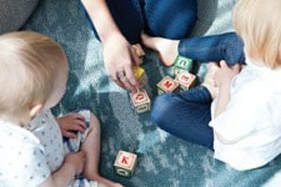6 Tips for Moving with a Toddler for a Stress-Free ExperienceYou might feel the urge to discipline your child once the moving-induced outbursts start, but it's essential to refrain from that. If only you could avoid these reactions. Actually, you might be able to do so. Or at least lower their intensity. The following advice should help you achieve just that. And who knows, in the end, your toddler may even become excited about the move!
1. Talk About It. Perhaps it seems silly, but kids understand way more than you think. With that said, the importance of having ''the talk'' with your toddler is not to be neglected. Of course, for them to acknowledge and accept the reasons behind your relocation, you'll have to use simple language - the language they can comprehend. While at it, reassure them of the following:
· Explain that nothing will change as far as their routine and your family is concerned. Mom and dad will still be there every step of the way.
· They won't leave behind any of their stuff. Their favorite toys and clothes are making the trip, too!
· Moving doesn't mean they won't see their friends and relatives ever again! Let them know they can call them or video chat with them whenever! If allowed by the distance, they may also be able to visit!
Even though you'll be using simple words to explain the situation, that doesn't mean you should talk to your toddler as if they were a baby. Use your normal tone, and make sure to look them in the eyes. That will make them feel like your equal. To further encourage the feeling of independence, ask them for their opinion. Is there anything they want to bring with them? Would they like to choose their own room upon arrival? Pick their brains a bit!
2. Pay a Visit to the New CommunityOnly not alone, but with your little one! Seeing the community, their new home, and meeting the neighboring kids should get them excited enough to remain calm. Make sure to take them there before you've officially relocated, though. The earlier they start associating their new environment with positive things, the easier and faster they will adjust.
If you haven't yet decided where you'll be moving with a toddler, consider the prospects of living in a smaller community. People tend to avoid crowded areas, especially those who have children. For a reason, of course! Preschools and schools in big cities are typically overcrowded. If the goal is for your little one to receive the best possible education, having them go to a facility in a less-dense environment should be a well-made choice.
3. Don't Change Your Toddler's RoutineIf your child has already gotten used to a specific schedule, try to stick to it by any means necessary. A sudden change in routine can make them think something has gone terribly wrong. They may become agitated and follow that with a tantrum. Yes, it might be hard to tuck them into bed and, at the same time, read their favorite bedtime story or keep up with the daily playing sessions while moving. But hey, it will make your toddler seemingly in control and thus happy. In addition, by committing to the same old routine, you allow yourself a chance to destress. And God knows you need it during these trying times!
Of course, when the time to box up their room comes, make moving with a toddler a breeze by including them in the process! Let them sort out their toys and place them into boxes that you will label together. It should go without saying that you must provide supervision during this event.
6. Stay Clear of the Old HouseYour little one needs closure in order to fully adapt to living in a new house. Having them revisit the old place will provide anything but that! What's more, seeing it empty may even scare them and, as a result, make moving with a toddler a hundred times harder! Instead of going to the old place, assure your child that a house is only a structure. The memories made there won't go anywhere. They'll stay forever locked in their hearts and minds. Now comes the time to make new ones! But first, they must give their new home a chance!
Meta description: Moving is tough, let alone moving with a toddler! Actually, the whole process can easily turn into a nightmare. But not with these tips!
Photos used:
https://www.pexels.com/photo/family-unpacking-after-moving-4569340/
https://unsplash.com/photos/Cq9slNxV8YU
https://www.pexels.com/photo/woman-in-white-long-sleeve-shirt-holding-pen-4569341/
https://unsplash.com/photos/VsB_Q52O3Jk














 RSS Feed
RSS Feed